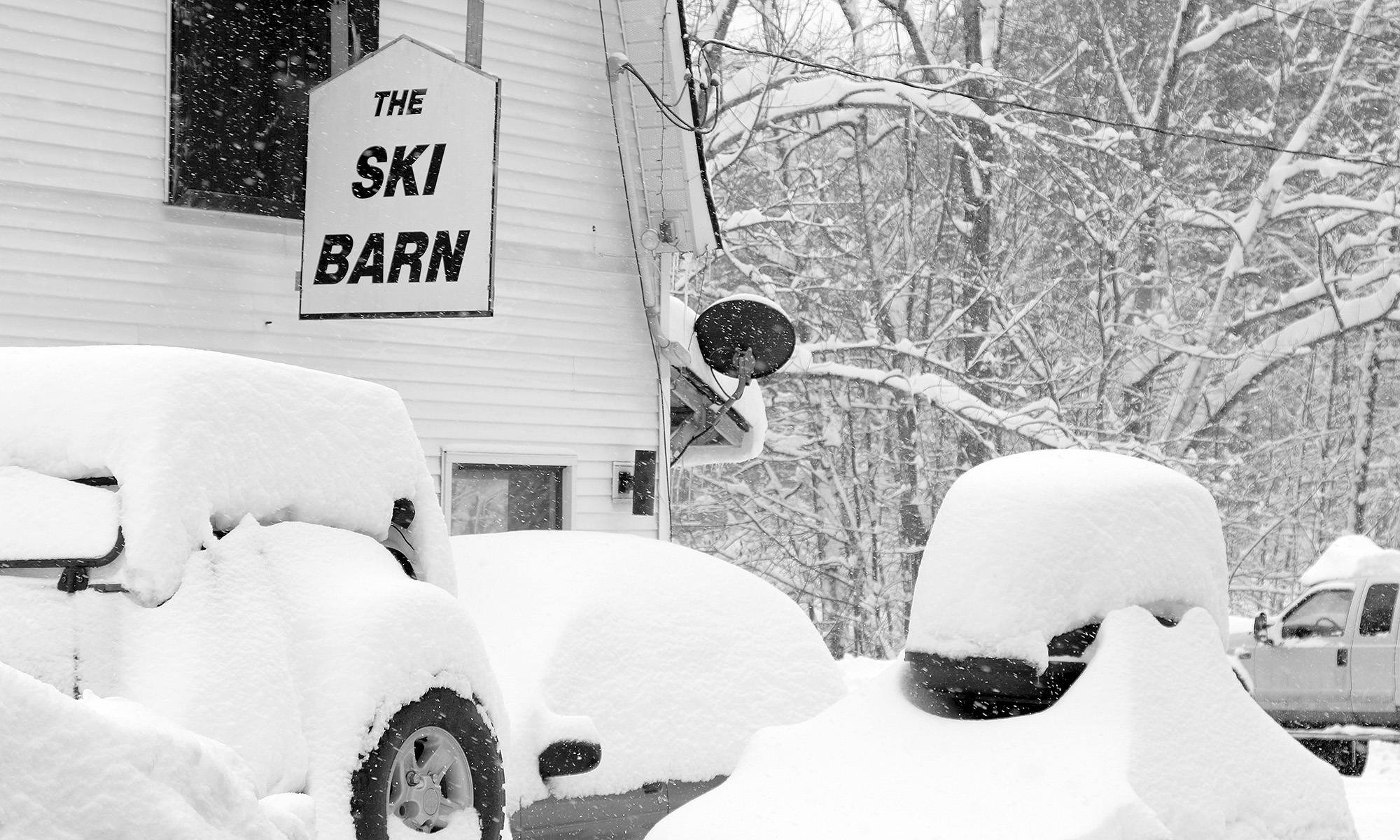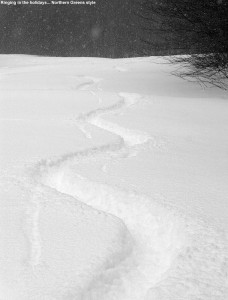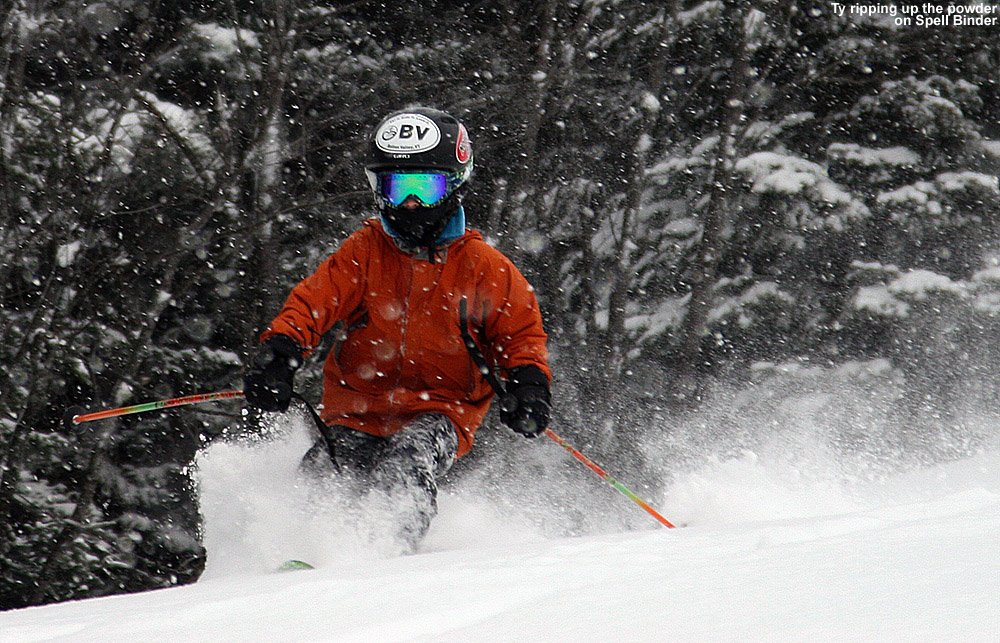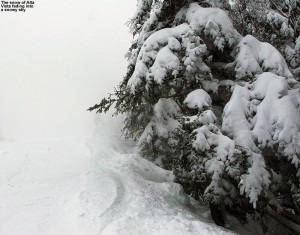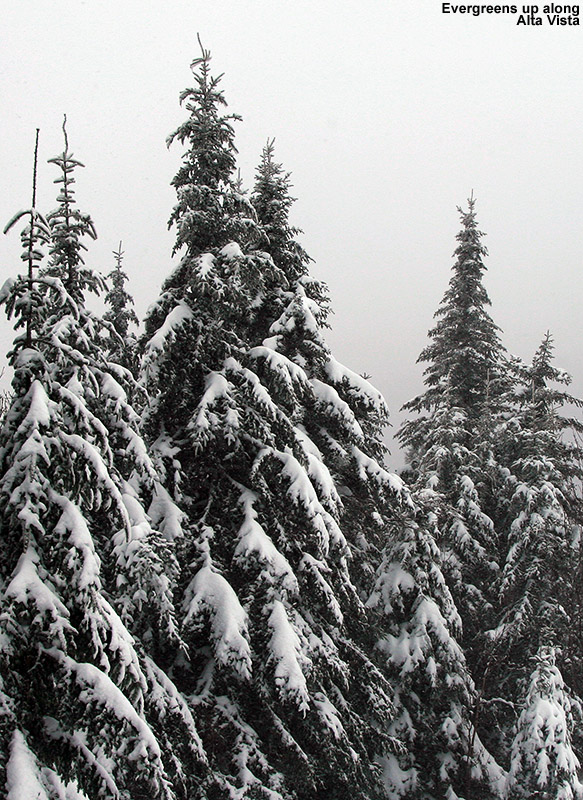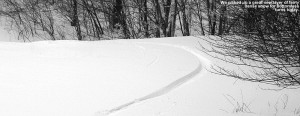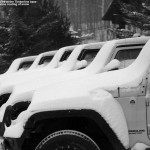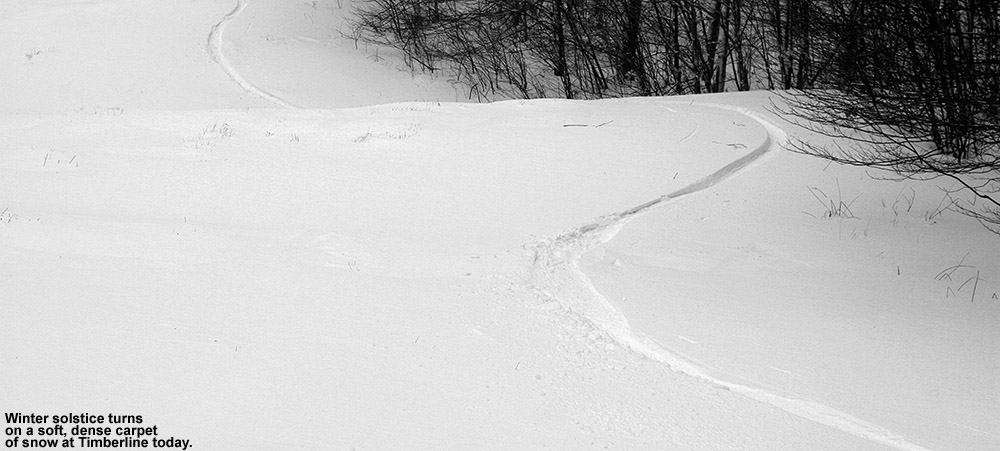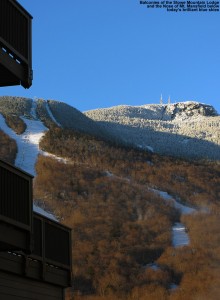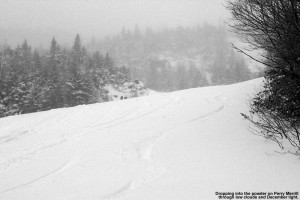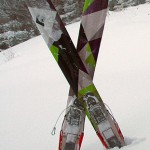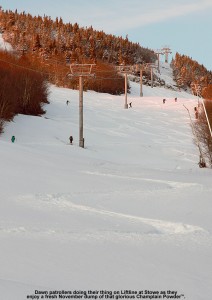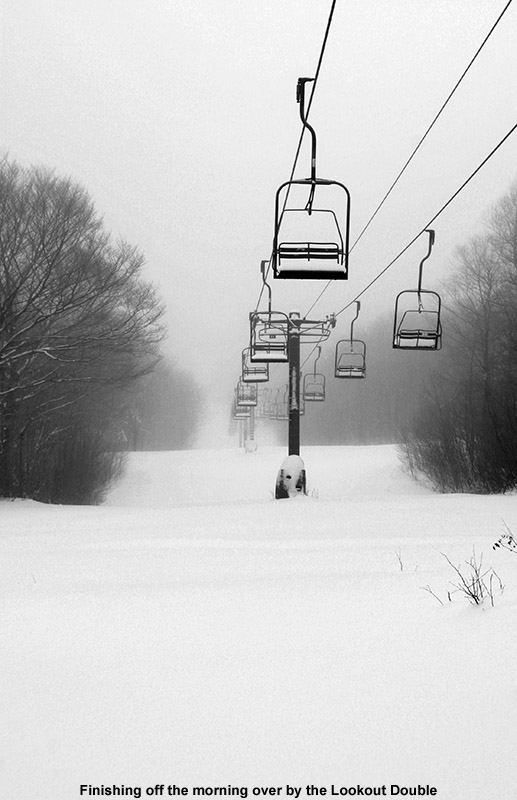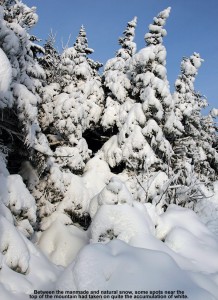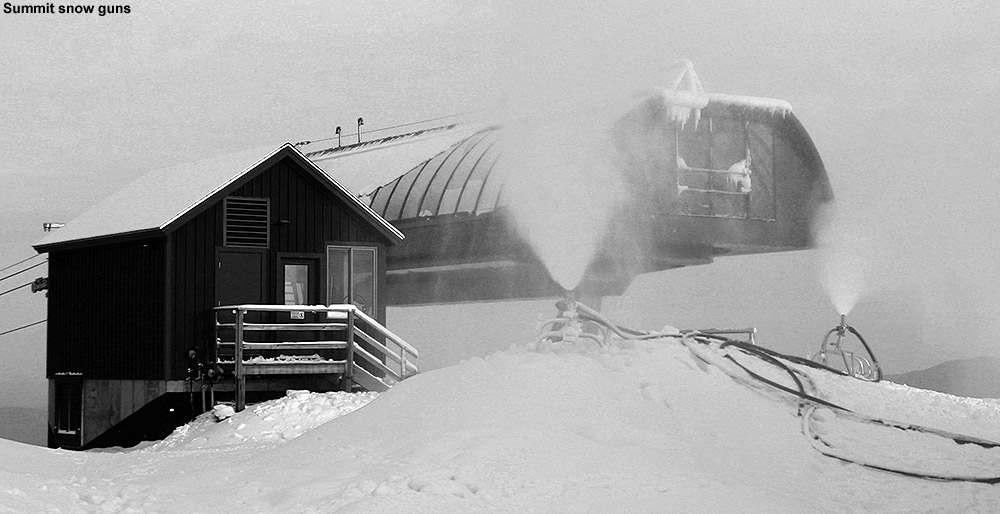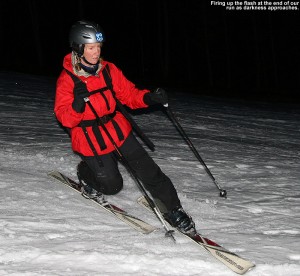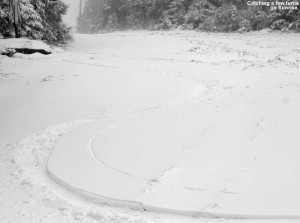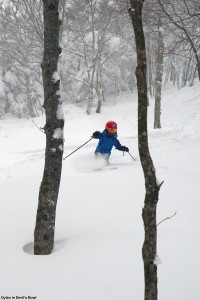
Flakes from the current Nor’easter appeared here at the house in Waterbury as of 11:39 P.M. yesterday evening, and the snow came in so quickly that we’d picked up roughly 2 inches in the first hour. The snowfall didn’t maintain that rate all night, but there were 4.8” on the snowboard this morning at 6:00 A.M., and by noon the storm total was 10.5” here in the valley. I cleared a few swaths in the driveway with the snow thrower, and then we headed up to Bolton for some afternoon turns. It wound up being just Dylan and me making the trip, because Ty was being a bit sassy, and Mom had to put her foot down and keep him home.
The roads were snow covered, and snow was falling at a good clip, but the drive went smoothly, even on the Bolton Valley Access Road. Of course having put some new Nokian WRG2 tires on the Subaru a couple weeks back probably helped out the cause. We’ve had previous iterations of the WRG2 on other Subarus, and they have been fantastic. They’re essentially a winter tire made to run all year round (i.e. no dealing with the hassle of changing over tires each spring and fall) and since we started using them on our vehicles several years back, we’ve never gone back to winter/summer only tires. E has driven in the snow a number of times with the new tires, but today was my first chance to really test them out. Let’s just say that they devoured the Bolton Valley Access Road today without even a slip, and the road must have been at least a bit challenging because there were plenty of cars that had to remain parked at the bottom due to not making it up the road. I even saw a guy at the bottom of the road that appeared to be putting his chains on his tires
“…Dylan got a nice steep, untracked
line. He really ripped that up, including
the roll over at the end that dropped
right out of sight.”
Snowfall was running in the inch per hour range up in the village, and there was some wind of probably 10-15 MPH, but it must have been well down from what was out there earlier – the Vista and Snowflake lifts had been down on wind hold in the early morning, but by mid morning the winds had let up enough to get them going. Since it was mid afternoon by the time of our visit, we grabbed a vacant spot in the top tier of the village parking lots, but it still only looked like three tiers had been filled anyway.
“My 6:00 A.M. and 12:00 P.M.
analyses down in the valley
indicated that this snow was
coming in in the 7 to 8% H2O
range, but it seemed to ski
heavier than that…”
Since Dylan saw that the Snowflake Lift was finally open for the season, he immediately requested a run on that to start things off. We decided on a route through the Butterscotch Terrain Park, which isn’t actually a park yet, but it’s open for skiing. Today’s update on the Bolton Valley website was letting folks know that the park was open even without the features, and that it was offering up some nice powder skiing. Today featured a somewhat uncommon east wind, so it was at our backs on the descent. We still found a couple of wind scoured spots in the terrain park, but in general it was smoothly resurfaced by the dump of new snow, so I think the easterly wind was a plus in that regard. My 6:00 A.M. and 12:00 P.M. analyses down in the valley indicated that this snow was settling down in the 7 to 8% H2O range, but it seemed to ski heavier than that – possibly due to the wind. It also may have seemed a bit heavy due to the super dry Champlain Powder™ that we skied on Sunday. This snow is definitely substantiating the base though, so it’s a big win in that regard. Like he’d done on Sunday, Dylan decided to closely follow my tracks in the powder, and it really worked out well for him in areas where he might otherwise bog down and lose speed. He seems to be having a lot of fun with the technique, and I think he’s learning a lot about line choice and all that.

For the next run it was my choice of lift and trail, and I chose the Vista Quad. For my trail I wanted to check out Devil’s Bowl, one of the areas that we worked on this summer with the glade crew. It took a bit of re-orienting and thinking to get myself there, but I found it just as I’d remembered. The snow was wind protected, but still skiing more like medium weight powder than I’d expect. The turns were very nice though, and it’s going to be fun exploring that terrain this season. On the lower mountain we got into the Enchanted Forest – coverage is decent but they could still use a bit more to cover up brush and roots. The latest snow is stacking up with some loft though – as we pulled out of one line in the woods and hit an open area, we found ourselves behind a huge boulder with a cap of snow that made it look like a mushroom. Dylan thought it was pretty cool, so I snapped a photo of him with his arms stretched out around it.
Dylan went with the Mid Mountain Lift for his next run, and I introduced him to Glades Right, which he approved of since he wanted to go that way anyway. Traffic had actually been pretty light in there, so Dylan got a nice steep, untracked line. He really ripped that up, including the roll over at the end that dropped right out of sight. We headed through Nixon’s and at the bottom of the mountain we took a powdery Lower Fanny Hill, dropping us right out at Wilderness.
We’d hit everything but the Wilderness Lift by that point, so it was the obvious choice for my run. On the lift ride, Dylan was definitely starting to get cold, so we made it a short run by getting off at the mid station. We checked out Andy’s, which has seen a similar level of traffic to Glades Right. The snow was good, the coverage was good, and it was fine way to end the afternoon on the slopes.
Dylan had been a trooper out there in the blowing snow, so we headed into the base lodge and I said that we could get something to eat. He was up for some pizza at Fireside Flatbread, and they’ve currently got it isolated from the rest of the upstairs lodge seating, so it made a great place to have a slice and relax as we talked about the afternoon. I’m not sure when the last time was that I’d had their pizza up there, but the crust was really good – definitely some quality flatbread crust, probably right up there with The Blue Stone, which is the new pizza place right in the center of Waterbury.
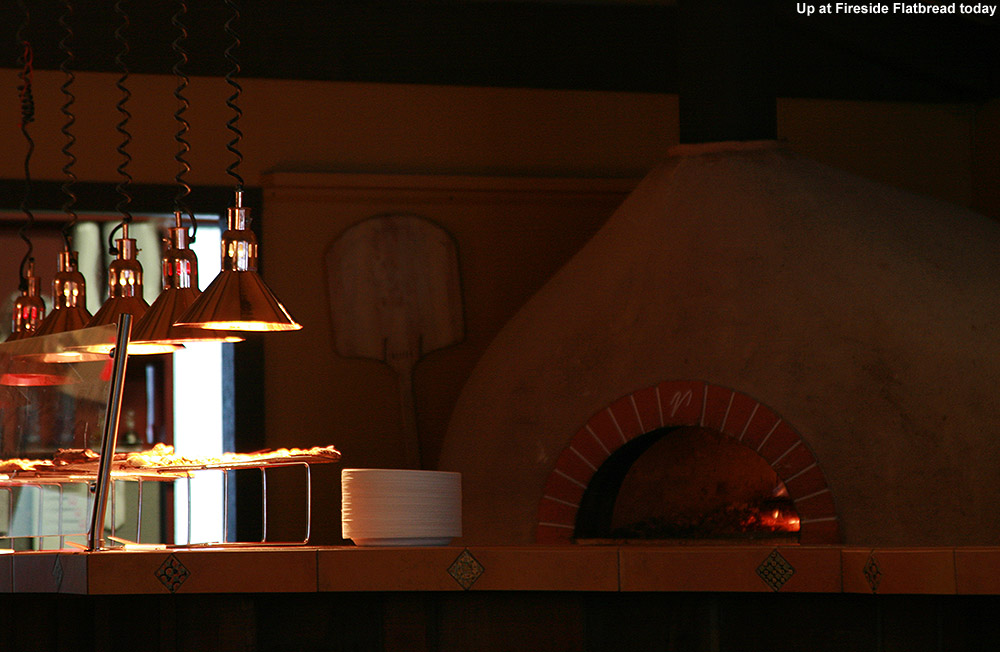
We had an interesting chance encounter at the end of the day when we gave a ride to a couple visiting from Minnesota. They had parked their car down at the Smilie Memorial School because they hadn’t been able to make it up the hill. It turns out that the woman, Ruby, had worked in one of our labs in the Biochemistry department at UVM a couple of summers back, so the rest of the ride I was able to catch her up on people she knew. She’s obviously got ties in the area, but it still made it feel like small world.
Overall it was a fun afternoon ripping up the powder with Dylan – all the lifts were walk on, probably due to the storm and the fact that the general message was to stay off the roads unless it was important. We didn’t quite adhere to that, but a few miles of driving isn’t too bad, even if the roads are a little snowy. It’s great to be back on the slopes after a few days off for the holiday, hopefully the snow gets freshened in the coming days and we can get some more good outings.
